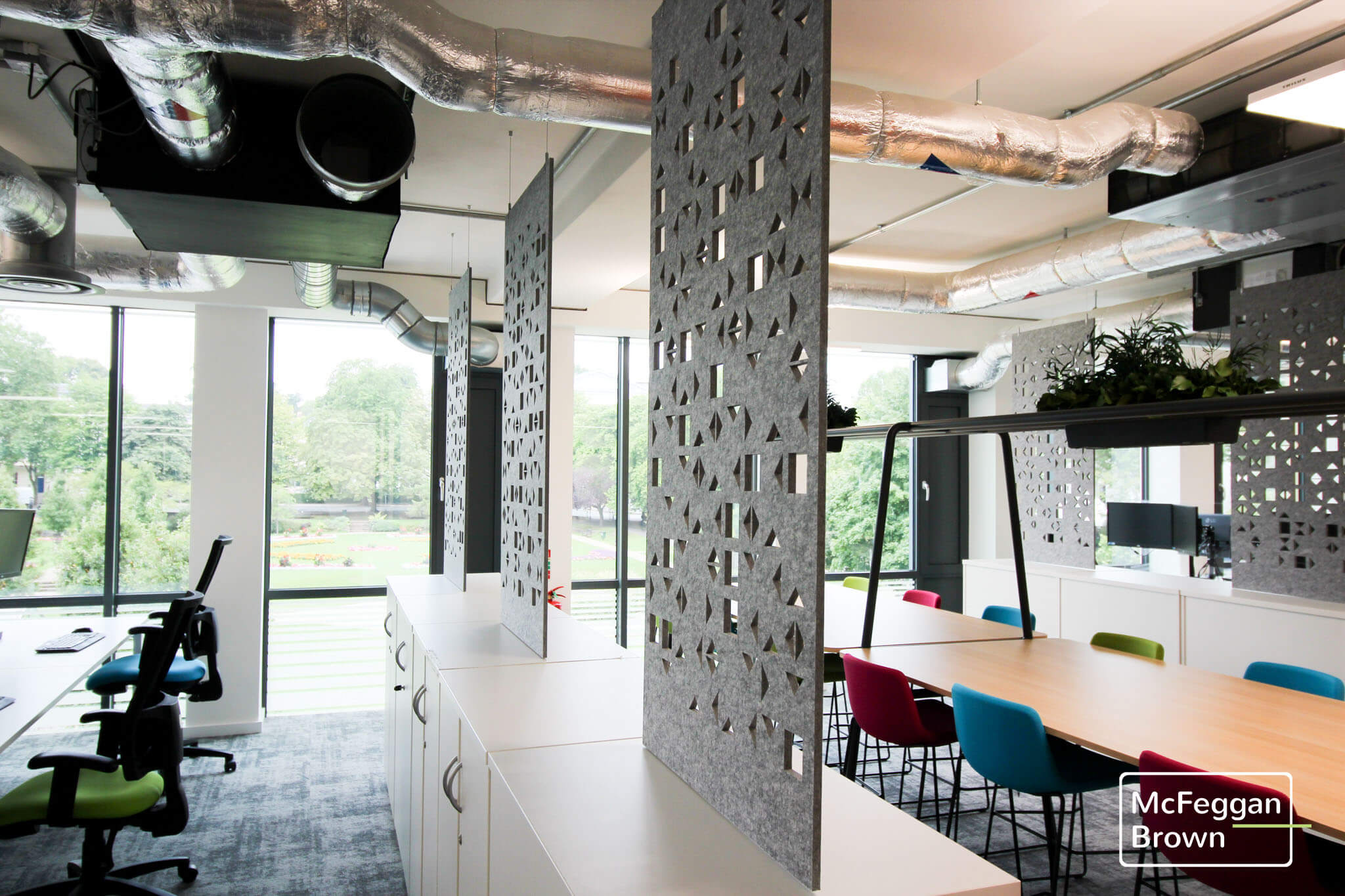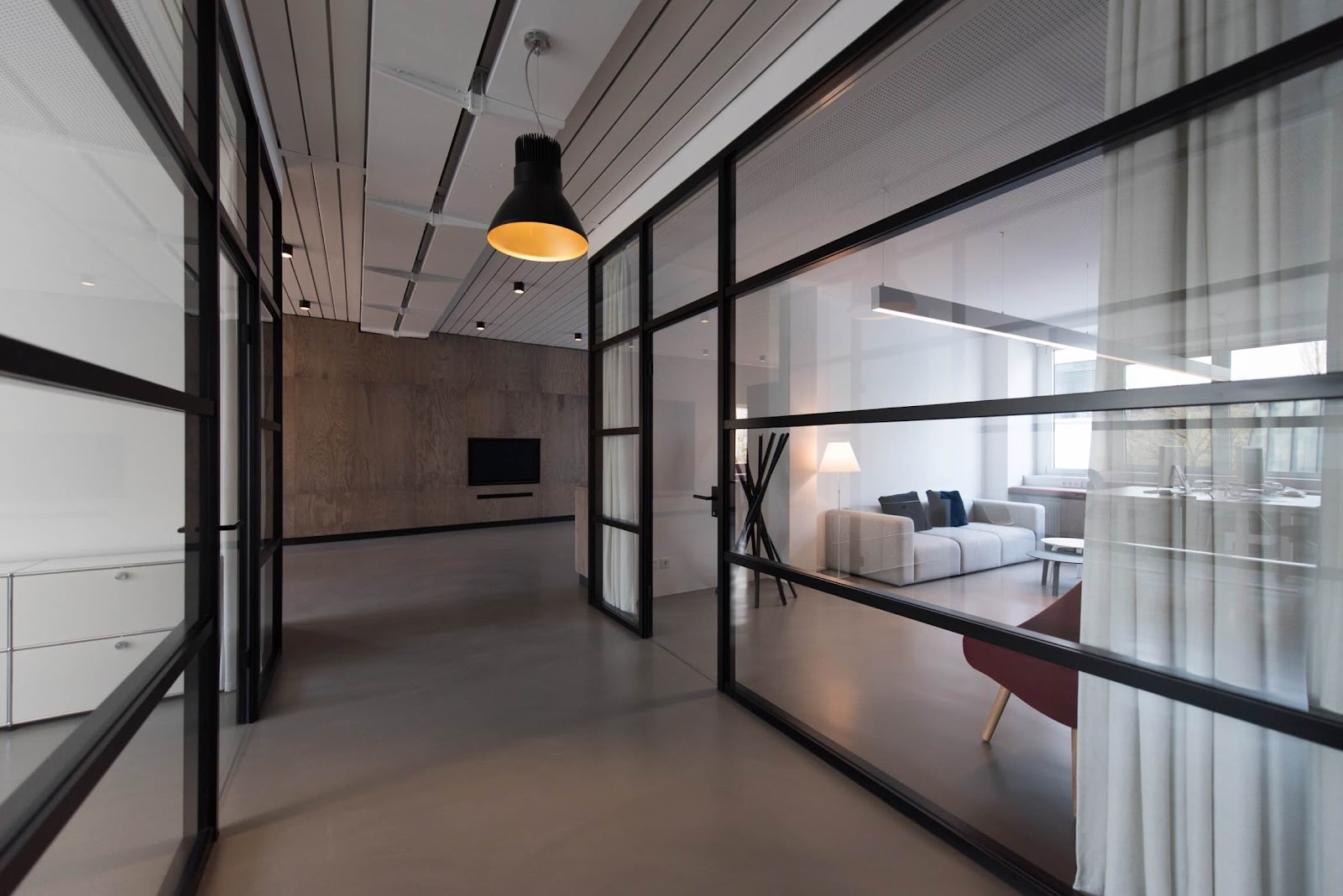Closed Vs Open Plan Offices

Do you prefer the flexibility of an open plan office or the privacy of a partitioned space?
Having the right layout for your office can have a huge impact on your employees. Before you start your office fit out, it’s important to consider how office design will cater to the requirements of your company as well as the needs of those that will be working within it.
When it comes to office floor plans, it can be difficult to know which style is right for you. So, to help you discover which will work best for you in your next commercial fit out, we’ve put together the key advantages and disadvantages of open plan office design vs partitioned office design!
Advantages of an Open Plan Office:
Open Plan Office Spaces are Brighter
Open plan offices are the perfect choice for those seeking to make the most of their natural lighting. Thanks to the lack of barriers or walls, open offices tend to feel more bright and airy than those with partitions, which is why this style can work so well for smaller spaces.
Good lighting is not just important for the aesthetics of the office, having a light office can have a positive impact on the performance and wellbeing of your workers.
Want to know more? Take a look at our article on the best office lighting for productivity and employee health.
Open Offices are Multifunctional
Flexibility is one of the key benefits of choosing an open office design. With no barriers to restrict you, your space can be easily adapted to suit the demands of multiple situations.
How about using your break-out zones as client meeting spaces or adding modular furniture so you can reconfigure your office for larger events?
With an open plan office design, you can effectively create a hybrid space that can be tailored to many needs. The possibilities are endless!
An Open Plan Space Encourages Interaction
Due to the nature of open offices, social interactions tend to occur far more frequently.
In an open plan space, it’s inevitable that workers will come into contact with each other more often and will be more inclined to build friendships and take part in conversations across departments.
This is great for office morale and a sense of community within the company because it helps to bring people together who may not otherwise interact.
Want to strengthen your company culture and encourage more social interaction in your office? Check out our article on the social workspace.
Open Plan Offices Feel Contemporary
Open plan office design is very popular at the moment. While some people do prefer the more traditional closed-off style, it’s clear that open plan layouts are here to stay.
If you’re hoping to attract the next generation of workers, designing an office that appeals to them is key to standing out and attracting potential employees.
Research suggests that Millennials and Generation Z’s have a huge preference for modern office design which has a notable impact on their desire to work for a particular company. So if you want to attract a vibrant, young workforce then the open place office is the way to go!
Open Offices Are Affordable
With no partitions to build or walls to upkeep, open design does tend to be the more affordable option. With its full flexibility, spaces can be changed with no limits or restrictions that may require any major manual work or serious re-design.

Disadvantages of an Open Plan Office:
Open Spaces Can Be Loud
While a lack of partitions can be a positive, it can also double up as a potential issue if there are employees who struggle with background noise or distractions as they work.
Due to the lack of materials to act as a buffer to other sounds, it can be harder to block out distractions such as other employees talking, phone calls and even music or people conducting meetings.
There are ways to counteract this, but it is certainly something that many people have to acclimatise to if they’re used to a quiet environment.
An Open Office Is Less Private
As mentioned above, some people prefer to have their own space. If you’re having a sensitive conversation or a serious meeting it can be difficult to restrict other people from hearing it without a partition or closed door. In this case, it may be worth considering adding a space that is partitioned-off within your office such as a booth or meeting pod.

Advantages of a Partitioned Office:
Partitioned Offices Are Quieter
A huge advantage of having partitions in an office is that you automatically have more privacy and peace and quiet. Sound travels less with more barriers between workstations, and a closed-off room gives the option to offer a meeting space that is separate from the rest of the office which is a desirable office feature for most companies. This can save on the cost of hosting the meeting elsewhere and can offer a multi-use space itself.
Closed Spaces = Reduced Distractions
Following on from the above benefit, having physical separations can help reduce distractions. Some people work better in different environments, so giving them the opportunity to personalise their own private workspace away from the noise of a breakroom or ringing phone can help increase productivity and overall performance.
Partitions Can Add Character
Partitions don’t have to be dull. At McFeggan Brown, we relish the opportunity to create features in your office that are as stunning as they are practical. You could use biophilic design features to act as barriers, smart storage walls or even partitioning walls that can be moved into different positions.
Closed Offices Create A Sense Of Order
Another advantage of partitioning is that you can easily organise employees via department or seniority. This is great for larger companies that rely on frequent group work or have different needs from their office space. It’s an excellent way to have a clear layout that can otherwise get lost in an open space.

Disadvantages of a Partitioned Office:
Divided Spaces Can Be Isolating
One disadvantage is that enclosed spaces and walls can divide up the workplace mentally as well as physically. Barriers can create a segmented feeling that discourages interaction and collaboration. Unlike with an open space, it is harder to cultivate a sense of ‘togetherness’. In this case, glass partitions are a great option to maintain the appearance of a more open design.
Partitions Reduce Space Elsewhere
In order to have adequate partitions you need enough space to do so in the first place. You may need to sacrifice space elsewhere just to ensure that the partitions don’t create cramped areas that no one actually wants to work in.
Partitioned Offices Can Be Restrictive
If your partitioning is made up of permanent structures, it can be very hard to make changes to your design in the future. With permanent dividers, you are restricted to the purpose and design of each section of your office if the barriers are difficult to adjust or remove.
In our opinion, it’s best to talk to your staff about their needs and design your office space with them in mind. There are plenty of options to choose from and aspects of both open plan and partitioned office designs can be merged and customised to suit you.
Getting your layout right can be daunting, but at McFeggan Brown, we have the expertise to ensure your office design is as good as it can possibly be. Whether you’re relocating to new offices or would like to refresh your current working space, we have the expert design knowledge you need!
You can get in touch to book a consultation or take a look at our previous work.